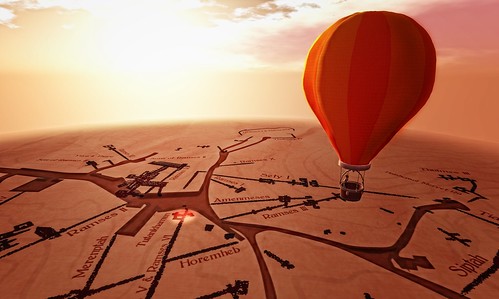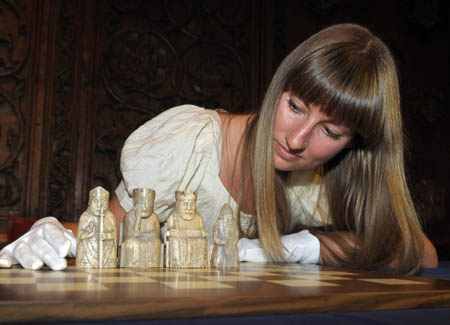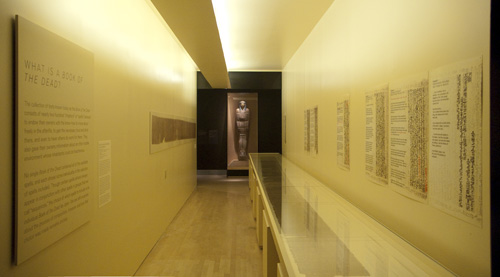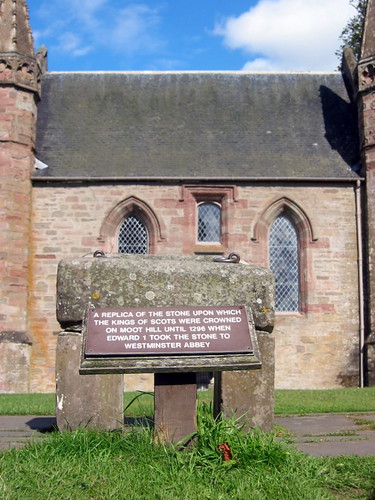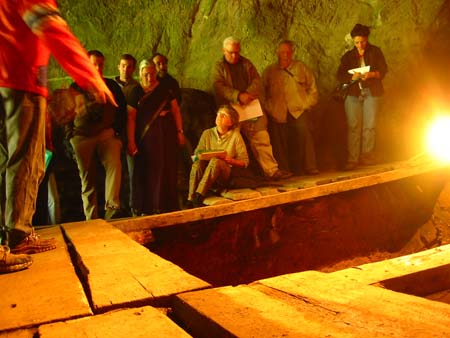Getting up close and personal with the inner circle of Stonehenge is no mean feat. Despite ongoing campaigns by Druids to open up the henge completely, the iconic Wiltshire monument is fenced off most of the year, and while access during the spring equinox and the summer and winter solstices might be much more free and easy, its so busy its difficult to get properly acquainted with the great and mysterious standing stones in any meaningful way. But fear not there are a raft of Stonehenge tours to choose from, each of them offering something a little different. Whether youre…
-
-
Consider yourself an authority on the many ongoing projects to survey and virtually-render famous monuments and heritage sites around the world? In that case, you should score high on the new Virtual Worlds Quiz which weve just launched on Heritage Key ten questions, each pertaining to cutting-edge endeavours to research and/or digitally recreate everything from Egyptian burial chambers to ancient Mayan cities. Compete now and, as well as bragging rights, you could win a wad of 10 site points. Fear not if you dont know your virtual Qumran from your 3D Forbidden City well give you a sporting chance by…
-
A reunion 180 years in waiting will occur this Friday in Edinburgh, as Lewis Chessmen pieces from north and south of the border are displayed side-by-side for the very first time at the National Museum of Scotland (NMS). The exhibition (one of our top ten to look forward to worldwide this year) marks the arrival of a 20-piece sample of the ornate, ivory-carved 12th/13th century artefacts in Edinburgh on loan from the British Museum, and the beginning of a tour of the country that between now and September 2011 will visit Aberdeen, Shetland and finally Stornoway on the Isle of…
-
Financial austerity measures were a grave problem in ancient Greece too it seems quite literally. In the same week that the European Union and the International Monetary Fund have been asked by Greece to unblock the first tranche of a 110-billion (93 billion) bail-out loan package in exchange for severe spending cuts, archaeologists have revealed how 2,300 years ago people in the northern Greek region of Macedonia were forced to scale back on funeral offerings, probably on orders from the king. The AFP reports that senior archaeologist for the Greek Archaeological Service Manthos Besios told Athens daily newspaper Ta Nea…
-
Brooklyn Museum have sent us some of the first pictures from their brand new long-term exhibit The Mummy Chamber, an exploration of afterlife beliefs and rituals in ancient Egypt, which as we blogged opened to the public on Wednesday. Featuring 170 pieces from the museums extensive Egyptian collection, it highlights the elaborate and often strange lengths sometimes gone to in the land of the pharaohs in order to ensure that a deceased individual had the most pleasant and trouble-free experience possible after passing on into the mysterious realm of the dead. That means displays of everything from mummies, coffins and…
-
in New York holds one of the largest and most famous collections of Egyptian material in the world. Today, it opens a brand-new, long-term exhibition gathering together 170 pieces from within its Egyptian collection titled The Mummy Chamber. Its an exploration of the many complex ancient Egyptian afterlife rituals and beliefs, which were all intended to protect a deceased soul from harm once they passed-on, and ensure a pleasant experience on the other side. It covers everything from mummification to the placing of votive goods in burial chambers. Organised by the Brooklyn Museums Curator of Egyptian Art Edward Bleiberg, The…
-
Police in Perthshire, Scotland are investigating the theft and prompt abandonment of a replica of the Stone of Destiny the battered, iconic, controversial and well-traveled symbol of Scottish royalty from outside Moot Hill Chapel at Scone Palace in Perthshire, by a seemingly ill-informed criminal gang. The real stone which itself has twice been stolen in the past, once from its original spot at Scone by King Edward I of England in 1296 and once from Westminster by a group of Scottish students in 1950 (they later gave it back) resides at Edinburgh Castle. It is said to be the seat…
-
Switzerland today signed an agreement for the repatriation of all illegally-obtained antiquities of Egyptian origin currently within their borders, according to a press release circulated by the Egyptian Supreme Council of Antiquities (SCA). It represents a major victory for Egypt in its battle against global artefact theft, since many stolen treasures from Egypt are smuggled via Switzerland. The agreement is the latest of 16 such treaties Egypt has reached with foreign nations since 2002. The SCA press release adds that Secretary General of the SCA Zahi Hawass is currently in the process now of forming agreements with other countries. The…
-
Archaeologists in South Africa have discovered a previously unknown species of human ancestor in the form of the 1.9 million-year-old partial skeletons of an adult female and a young male hidden deep in an underground cave outside Johannesburg. Theyre thought to represent a key period of evolutionary transition between ape and man. The find is believed to be so important that the lead scientist behind their research has described the species dubbed Australopithecus sediba as potentially being the Rosetta Stone that unlocks our understanding of the genus Homo. The find comes hot on the heels of the discovery of the…
-
Knuckle-dragging, bare-chested, monosyllabic men who once had to rely on violence and brute strength to get by arent as stupid as we think at least judging by the news that ex-cage fighter Alex ‘Mr Katie Price’ Reid is to try his hand at acting, in a new BBC historical costume drama called 200BC. Oh, and cavemen were quite clever too it seems. Reids role is going to be as a prehistoric intellectual in the show, which will be based on growing evidence that Homo sapiens actually lived relatively sophisticated lives, contrary to our idea of them as club-wielding simpletons little…

